Past Presidents
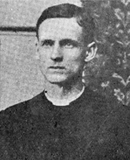
Reverend John J. Mangan, 1892-1895
Reverend John J. Mangan, a native of Cuba, New York, was named as the first President of St. Thomas College by its founder, Bishop William O’Hara, when the college first opened in 1892 four years after the cornerstone for the College’s first building (later known as “Old Main”) was laid. He had been ordained by Bishop O’Hara only three years earlier and had been an assistant pastor at St. Peter’s Cathedral. During his presidency, the College’s faculty is all either seminarians preparing for ordination or else other young newly ordained priests. Students were mostly of high school age and the College had yet to begin a program leading to any baccalaureate degrees. In February 1895, Fr. Mangan, not yet 32 years old, died a few days after suffering a sudden heart attack while celebrating Mass at the Cathedral. His successor as President was not announced by Bishop O’Hara until the following August.
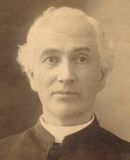
Reverend Daniel J. MacGoldrick, S.J., 1895-1900
Nearly a half-century before The University of Scranton became a Jesuit university, a Jesuit priest would serve as St. Thomas College’s second President. After immigrating to Boston from his native Ireland, Reverend Daniel J. MacGoldrick, entered the Society of Jesus in 1872. Following formative studies in Canada, England and Belgium, he was ordained to the priesthood in Woodstock, Maryland, by James Cardinal Gibbons in 1884. During the next 11 years, Fr. MacGoldrick taught science courses at several Jesuit colleges, including Fordham and Holy Cross, and also was assigned to pastoral work in Baltimore, New York and Washington. As a trained geologist, he had connections to the mineralogical departments at both John Hopkins University and the University of Pennsylvania.
In 1895, Fr. MacGoldrick was assigned on a mission to the diocese of Scranton where Bishop O’Hara appointed him to the presidency of St. Thomas College. During his first year as President, instruction continued to be in the hands of Fr. MacGoldrick and other diocesan priests; however, in August 1896, Bishop O’Hara invited the Xaverian Brothers to take over the staffing of the College. Their tenure in Scranton lasted only one year, and, in 1897, the Brothers of the Christian Schools replaced the Xaverian Brothers. For the next 45 years the College would remain under the direction of the Christian Brothers. They were the ones responsible for the development of a true college-level curriculum, which would lead to the conferral of the first baccalaureate degrees by 1901. Enrollment, which had dropped to fewer than 20 students by the fall of 1897, began to grow by the turn of the century.
When the Christian Brothers arrived they assumed control over the day-to-day administration of the College under their community’s head, Brother Candidian, F.S.C., who served as the College’s Director. After one year Brother Candidian was replaced as Director by Brother Fintan Andrew, F.S.C. The title of Director at Christian Brother colleges was normally synonymous with that of President; however, Fr. MacGoldrick retained the title of President until his death in the summer of 1900. During the final three years of his presidency, Fr. MacGoldrick’s presidential duties were largely just serving as a liaison between the Bishop and the College’s Christian Brother Director.
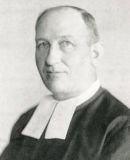
Reverend Brother Fintan Andrew, F.S.C., 1900-1904
Like his predecessor, Reverend Brother Fintan Andrew, was a native of Ireland. Born as Robert Shore Brennan, he graduated from St. Kierran’s College in Kilkenny in 1883, after which he immigrated to the United States and immediately entered the Christian Brothers where he was given the name, Brother Fintan Andrew. After completing his training as a novice at Ammendale, Maryland, he taught for eight years at St. Peter’s School in Baltimore, and then as a faculty member at Calvert Hall College. In 1895, Brother Fintan Andrew was appointed as principal of St. John’s School in Orange, New Jersey. Three years later he came to Scranton as the Director of St. Thomas College. Following the death of Fr. MacGoldrick, Brother Fintan Andrew became the College’s third President in 1900.
Brother Fintan Andrew oversaw the transformation of St. Thomas College into a genuine college. By the end of his tenure in Scranton there were 67 students enrolled who were pursuing bachelor’s degrees. However, because the College did not yet have a charter from the Commonwealth of Pennsylvania authorizing it to confer degrees in its own name, the diplomas presented to graduates of St. Thomas College between 1901 and 1918 were awarded in the name of other accredited Christian Brother colleges.
After leaving Scranton in 1904, Brother Fintan Andrew served in administrative and teaching positions at several Christian Brother colleges, including as President of St. John’s College in Washington, D.C., from 1910 to 1913. Known for his dignity and gravity he was widely respected by both his students and colleagues alike. A crippling stroke ended his active career in 1929 before his death in December 1934, his 51st year in religious life.
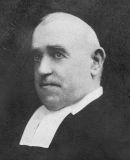
Reverend Brother Eligius Lewis, F.S.C., 1904-1913
Another native of Ireland, Reverend Brother Eligius Lewis, immigrated to America as a young man where he first encountered the Christian Brothers as a student at St. Mary’s Catholic Institute in Jersey City, New York. He entered the Christian Brothers novitiate in 1884. Before being assigned to St. Thomas College as President 20 years later, he served at a number of other Christian Brother schools in the Philadelphia area.
Brother Eligius Lewis’ nine year presidency was longer than that of any of his predecessors. During his tenure the College’s enrollment grew slowly, but steadily. The number of incoming freshmen tripled; however, the percentage of those pursuing four-year degrees remained small. The majority of students were enrolled in two-year commercial or pre-medical programs. The first improvements in the College’s physical plant came while Brother Eligius Lewis was President. The number of classrooms was increased in Old Main where science laboratories were also updated. In 1908 ground was broken for a new residence for the Christian Brothers on a site adjacent to Old Main where the Brothers had resided since 1897 in a house purchased by the Bishop. Nearly a half-century would pass before The University of Scranton would engage in any new construction.
After his presidency ended, Brother Eligius Lewis returned to Philadelphia, but he came back to St. Thomas College in 1918, and for the next eight years served as the College’s bookkeeper and accountant. For several years before his death in January 1931, he was in very poor health.
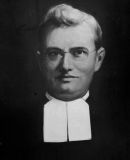
Reverend Brother Abdas John, F.S.C., 1913-1916
The fourth President of St. Thomas College to have been a native of Ireland where he was born William Treat Comerford, Reverend Brother Abdas John, entered the Christian Brothers novitiate soon after his arrival when he was just 15 years old. During his ensuing lengthy career he served as an instructor and administrator at virtually every one of the schools in the Christian Brothers’ Baltimore province, and as the President of no fewer than four of their colleges, as well as two other schools. Before coming to Scranton, he had already had presidencies at St. John’s College in Washington, D.C., and La Salle College in Philadelphia.
Enrollment continued to grow early in Brother Abdas John’s presidency with over 100 entering first-year students in the fall of 1914. That number, however, fell sharply over the next two years as the outbreak of war in Europe and the introduction of military conscription in the United States led to a drop in college enrollments throughout the country. While many institutions were able to compensate for this by developing training programs for military cadets on their campuses, St. Thomas College, lacking its own state charter, was not able to do. As Brother Abdas John’s presidency ended in 1916, there was increasing concern over the College’s ability to continue to offer a baccalaureate degree.
After leaving Scranton, Brother Abdas John served in several other administrative positions, including presidencies at Calvert Hall College in Baltimore, the Normal Institute in Ammendale, Maryland and St. Patrick’s Commercial Academy in Augusta, Maryland, before his death in August 1929.
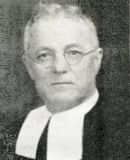
Reverend Brother Edelwald Alban, F.S.C, 1916-1919
Born as Sebastian Emes in the state of Bavaria within the German Empire, Reverend Brother Edelwald Alban, immigrated to America at the age of 16 where he immediately entered the Christian Brothers novitiate at Ammendale, Maryland. While fluent in Latin and French, in addition to his native German, he learned English only when he began his training in America. Since so many of his fellow brothers were natives of Ireland, Brother Edelwald Alban’s command of English came to be accompanied by a pronounced Irish brogue, so much so that he was frequently mistaken for a native Irishman. After his initial assignments at St. Peter’s School and La Salle College in Philadelphia, he first came to St. Thomas College in 1907 as an instructor in languages and mathematics where he remained as a faculty member until 1913. Three years later, after finishing a Master of Arts degree at the Catholic University of America, he returned to Scranton as St. Thomas’ sixth President.
Enrollment continued to decline, especially after the United States entered the war in Europe in the spring of 1917, and in September 1918 Brother Edelwald Alban was forced to announce that St. Thomas College would become a junior college offering only two-year programs. No baccalaureate degrees were to be conferred at commencement ceremonies for the next seven years. For 20 years after leaving Scranton Brother Edelwald Alban served on the faculty of Christian Brother schools in Maryland until his death in 1939.
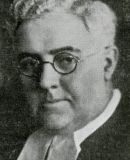
Reverend Brother Glastian Philip, F.S.C., 1919-1922
When he arrived to assume its presidency Reverend Brother Glastian Philip was no stranger to St. Thomas College, nor to Northeastern Pennsylvania. He was born John Eagan in Minooka (then not yet incorporated into the city of Scranton), and at the age of 18 was among the first students to enter the College when it opened in 1892. Although there were no Christian Brothers in Scranton at the time, it was that order he chose to enter after just two years as a student at St. Thomas. Except for Frank O’Hara ’25 who served very briefly as Acting President of The University of Scranton in 1942, Brother Glastian Philip is the only President in the University’s entire history to have been a native of Northeastern Pennsylvania.
During his tenure as President, the College remained a two-year college. However, its enrollment grew to 450 students by 1921, making it possible for his successor to move towards restoring a four-year baccalaureate program. In the years following his presidency in Scranton, he went on to oversee the establishment of Christian Brother high schools in both Los Angeles and Pittsburgh, before returning to St. Thomas College in 1932 (for two years) as head of the Education Department. At the time of his sudden death in 1937, he was directing the Saint La Salle Auxiliary, which raised funds for the Christian Brothers Baltimore District. Several of Brother Glastian Philp’s descendants would become alumni of St. Thomas College and The University of Scranton, most notably his nephew, Michael J. Eagan ’27 who went on to serve as Chief Justice of the Pennsylvania Supreme Court.
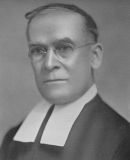
Reverend Brother Firmus Edward, F.S.C., 1922-1925
Born Charles Edward Berger, Reverend Brother Firmus Edward first encountered the Christian Brothers as a student at St. Peter’s Parochial School in his native Philadelphia. While still only 14, he entered the order in 1886. After serving as a teacher in the sciences and art at several schools and colleges in Maryland and at La Salle College in Philadelphia, he came to St. Thomas College in 1915, where he served a faculty member for six years before assuming its presidency in 1922.
It was Brother Firmus Edward who oversaw the restoration of a four-year baccalaureate program at St. Thomas. Moreover, he obtained a charter from the Commonwealth of Pennsylvania authorizing the college for the first time since its foundation to award degrees in its own name. The fruit of his labor came in June 1925, when the graduating seniors proudly received their diplomas reading “St. Thomas College.” Among the members of that historic class were two men who would become prominent figures at the College and later the University, Frank J. O’Hara, as long-time registrar, and James J. Driscoll, as a multi-talented English professor.
After leaving Scranton, Brother Firmus Edward served as a senior administrator at La Salle and Calvert Hall Colleges before returning to the classroom in 1931. He returned to St. Thomas College as a faculty member from 1932 to 1935. When he died in 1948, he had been a member of his order for no less than 62 years.
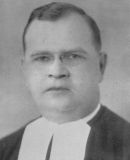
Reverend Brother George Lewis, F.S.C., 1925-1931
Born William Stanley Matthews, Reverend Brother George Lewis also entered the Christian Brother junior novitiate at the age of 14, after being a student in one of their schools in his native Washington, D.C. A trained mathematician, he earned a master’s degree at the University of Pennsylvania and served as a faculty member teaching math and physics at La Salle College for eight years before coming to St. Thomas College in 1922, where for the next three years he served as the College’s Sub-Director under Brother Firmus Edward whom he then succeeded as President in 1925.
Brother George Lewis’s tenure as President coincided with what might be seen as St. Thomas College’s “Golden Days.” Enrollment continued to grow, and by 1928 the school became fully-accredited by the Middle States Association of Colleges and Universities. The College’s athletic teams, especially football, became increasingly competitive. It was only as his presidency neared its end that the onset of the Great Depression began to present the College with economic pressure. While the Brothers and Frank O’Hara as the College’s registrar made sure no student was dismissed if his parents were unable to pay tuition, the Bishop, who still owned the College, was now being asked to find additional funding, which began to put the College in debt.
After leaving Scranton, Brother George Lewis taught at Calvert Hall College before returning to La Salle College in 1934 where he would remain until his death in 1960. In addition to his work in the classroom at La Salle, he served as its dean from 1938 to 1944, and as its president from 1944 to 1952. In 1954 The University of Scranton honored him with the conferral of an honorary degree.
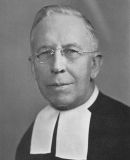
Reverend Brother Denis Edward, F.S.C., 1931-1940
Like his presidential predecessor Brother Firmus Edward, Reverend Brother Denis Edward, born Henry Yourgens, was a native of Philadelphia and studied under the Christian Brothers at St. Peter’s Parochial School before entering the order’s junior novitiate in 1884. In 1899, he came to St. Thomas College where he served as a faculty member for two years, and after serving in several administrative positions, including presidencies at both La Salle and St. John’s Colleges, he returned to St. Thomas College as a teacher between 1924 and 1928, during which time he also completed the requirements for a Ph.D. in philosophy from Fordham University.
In 1931, he began his third assignment in Scranton as the College’s President and over the following nine years had arguably the greatest impact of all of the other Christian Brother presidents. Driven by his determination to raise St. Thomas’s academic standing, he recruited a growing number of lay faculty, several with Ph.D.s, persuaded the bishop to allow admission of women to the Evening Division over the objection of Marywood College, and in 1938 virtually single-handedly changed the school’s name from St. Thomas College to The University of Scranton. The Bishop, the Most Reverend William J. Hafey, and his Advisory Board had agreed to the change assuming it would not be implemented until the College had moved beyond awarding just baccalaureate degrees; however, Brother Denis Edward immediately went to the local Court of Common Pleas to obtain an order authorizing the change. Unfortunately, despite all of his efforts, with the Depression continuing, the University continued to represent a drain on the Diocese’s financial resources. In 1939, Bishop Hafey closed the St. Thomas College High School, which years earlier had been relocated from Old Main to another location in downtown Scranton.
After leaving Scranton, Brother Denis Edward served as the Inspector of Schools for the Baltimore Province for 18 years. A recognized leader in education, he was a co-founder of the Catholic Education Association of Pennsylvania and the founder of the Christian Brother Educational Association. In 1962, one year after his death, he became the only Christian Brother to be memorialized on The University of Scranton campus when one of the freshman dorms in the upper quad was dedicated as Denis Edward Hall.
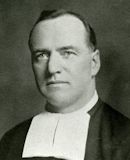
Reverend Brother Eliseus Leonard, F.S.C. 'H'71, 1940-1942
Not long after his birth as Joseph Brennan in Ballycomey, Ireland, Reverend Brother Eliseus Leonard’s family immigrated to the United States where he entered the Christian Brother’s junior novitiate in 1907. After his training, which included two years studying French in Belgium, he served as a teacher and later in administration at several Christian Brother schools, including Rock Hill College, Calvert Hall College, St. John’s College and La Salle College where he served as its president for three years before assuming the presidency of The University of Scranton in 1940.
In December 1940, the University’s physical plant was expanded by the Bishop’s purchase of a large building, formerly a private hospital, on the corner of Wyoming Avenue and Mulberry Street. Ironically, just as what would be called simply the “Annex” was acquired, the need for more space became less necessary as the start of war in Europe and the resumption of military conscription in the United States led to a decline in enrollment that would only accelerate over the following year by which time, in December 1941, the United States had become a belligerent in what was a global conflict that was certain to be protracted.
By the beginning of 1942, Bishop William J. Hafey had come to recognize that the Brothers’ first priority in assigning their manpower went to those schools, like La Salle College in Philadelphia, which they not only administered, but also owned. In February he made an overture to the Society of Jesus inviting them to assume not merely the University’s administration, but its ownership (including its debts) as well, an offer they accepted in May. These moves by the Bishop were done very much behind the scenes – Brother Eliseus Leonard and Frank O’Hara, the University’s registrar, were the only members of the University staff privy to the impending change. When the University’s commencement was held on June 7, no mention was made that it was to be the last under the Christian Brothers. It was not until about a week later, after Brother Eliseus Leonard and the rest of the Christian Brother community had left Scranton, that the diocese announced that The University of Scranton would become a Jesuit university.
After leaving Scranton, Brother Eliseus Leonard served in administrative positions at several schools over the following three decades before his health began to fail.
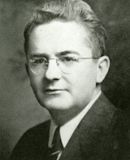
Mr. Frank J. O’Hara H'56 (acting), 1942
Francis John O’Hara’s association with St. Thomas College began when, at the age of 14, he was enrolled as a freshman in its high school. A native of Throop, he matriculated in 1921 as an undergraduate in the College where he excelled both in academics and in extracurricular activities as editor of The Aquinas and as founder of the College Dramatic Society. In 1925, he received his baccalaureate degree, a member of the first class to receive their degrees under the College’s own state charter.
Upon graduation he was hired as the school’s Registrar and, over the years that followed, he became a key administrator and confidant to the Christian Brother presidents. In addition to his duties as Registrar, he also served as Bursar and even at times was in the classroom as an instructor. When the Christian Brothers left Scranton in June 1942, Bishop William J. Hafey appointed him as Acting President of what was by then The University of Scranton until the Jesuits arrived a month later to assume its control.
Frank O’Hara continued as the University’s Registrar until 1957, after which he became the Alumni Director and later Moderator. His extensive involvement in numerous civic societies helped advance the University’s role within the local community, where he became known as “Mr. University.” In 1956, his service to his alma mater was recognized by the conferral of an honorary degree. In 1969, the former Glen Alden Coal Company building on the corner of Jefferson Avenue and Linden Street was acquired by the University and renamed O’Hara Hall in his honor. At the time of his death in 1977 he had been a full-time employee of the University for more than a half-century, the first in its history to reach that landmark.
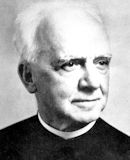
The Very Reverend W. Coleman Nevils, S.J., 1942-1947
William Coleman Nevils was born in Philadelphia in 1878. He entered the Society of Jesus in 1896, and before his ordination in 1911, taught at Boston College and at Loyola High School in New York City. He later taught at The College of the Holy Cross and Georgetown College, becoming dean of the latter in 1918. From 1924 to 1928, he was dean of the Shadowbrook House of Jesuit Studies, and from 1928 to 1935 he was president of Georgetown University. After leaving that post he became pastor of St. Ignatius Loyola Church in New York City and rector of the Jesuit communities at two high schools in New York before briefly returning to Georgetown.
After the Jesuits agreed to assume both ownership and administration of The University of Scranton, the Provincial of the Maryland Province announced the appointment of Fr. Nevils as both President of the University and Rector of the Jesuit community – positions that would be combined until 1970 when the appointment of presidents became the prerogative of a Board of Trustees independent of the Jesuit community. The building adjacent to Old Main on Wyoming Avenue that had housed the Christian Brothers was too small to accommodate the 18 Jesuits who arrived in the summer of 1942, so one of Fr. Nevils’ first decisions was to occupy an elegant mansion structure on Ridge Row in the lower Hill Section. The building, built by the Scranton family in 1872, along with much surrounding acreage, was donated to the Bishop of Scranton in December 1941 to be used for the University. While the Brothers never made any use of the Scranton Estate before their departure, it would remain as the Jesuit community residence for more than 40 years. During Fr. Nevils’ presidency, however, all of the University’s operations, including all classes and offices continued to be centered in Old Main, which, as long as World War II continued and enrollment remained minimal, was more than adequate.
Fr. Nevils moved quickly to establish close ties between the University’s new Jesuit leaders and the local community, accepting numerous invitations to speak before both civic and Catholic associations. In response to overtures from both the Bishop and local parents in 1944 he established a secondary school, the Scranton Preparatory School, using the former hospital building that the Bishop had purchased for the University in 1940. The end of the war in 1945 led to a surge in enrollment, and in Fr. Nevils’ last year as president, the University was leasing space in several downtown locations to supplement Old Main, which by then was being stretched beyond its capacity.
After leaving Scranton, Fr. Nevils returned to New York City where he served in a number of positions. At the time of his death in 1955, he was the spiritual director of the Jesuit community at St. Ignatius Church. Ten years later a newly-constructed University student residence was dedicated in his memory as Nevils Hall.
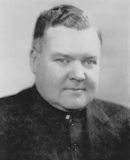
The Very Reverend J. Eugene Gallery, S.J., 1947-1953
A native of Baltimore, Joseph Eugene Gallery was a graduate of two Jesuit schools in Washington, D.C., first Gonzaga High School and then Georgetown University where his studies were interrupted by military service during World War I as a second lieutenant in the U.S. Army. By 1920, he had earned both a baccalaureate and master’s degree in sociology. For the next decade, he was involved in a number of business enterprises in the Washington area where he also became very active in the Knights of Columbus, serving as a District Master before entering the Society of Jesus in 1931.
Following his ordination in 1939, Fr. Gallery was associated with a number of agencies in New York City concerned with child welfare before he was assigned to be one of the members of the initial Jesuit community at The University of Scranton in 1942. For the next five years he served as chair of the University’s Social Studies Department. He was instrumental in the creation of an Institute of Industrial Relations with centers in Hazleton, Shenandoah and Scranton where University faculty provided training for individuals from both labor unions and management in an effort to foster better relations between the two. Fr. Gallery himself was frequently called upon to serve as an arbitrator in industrial disputes. He was also heavily involved in local welfare agencies, and his services in that area were recognized by two Pennsylvania governors who appointed him as chair of commissions on child welfare.
One of Fr. Gallery’s first actions after being named to succeed Fr. W. Coleman Nevils as the University’s president was to acquire three surplus Navy barracks, which were erected in the fall of 1947 on vacant lots in the 900 block of Linden Street that included two that had been given to the University by the Scranton family at the same time as the Scranton estate residence. For the next 15 years the University’s campus would be divided between Old Main and the former Brothers’ residence (renamed by the Jesuits as La Salle Hall) on Wyoming Avenue and the three barracks buildings some seven blocks away to the east-one housing departments in the humanities called the A Building, one housing the business department called the B Building and one housing the Physics and Electronic Engineering Department called the E Building. While the barracks lacked any aesthetic appeal in their appearance, they allowed the University to accommodate the surge in its enrollment that continued into the 1950’s as returning veterans took advantage of the educational benefits of the G.I. Bill of Rights.
During Fr. Gallery’s presidency in 1950, the University opened a Graduate School and, two years later, awarded its first master’s degrees in education. Graduate programs in other fields including business administration and chemistry followed soon afterward
In 1953 Fr. Gallery was reassigned to Loyola College in Baltimore where he served as a professor of sociology before being named treasurer of St. Joseph’s College in Philadelphia in 1958. He was only 61 years old when he died in 1960 at the Georgetown University Hospital in Washington.
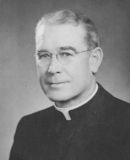
The Very Reverend John J. Long, S.J., 1953-1963
A native of Philadelphia, John J. Long entered the Society of Jesus in 1917 after graduating from Roman Catholic High School where his father taught mathematics. Except for three years as a teacher at the Georgetown Preparatory School prior to his ordination in 1930, virtually all of Fr. Long’s assignments as a Jesuit were in administrative positions first at the Jesuit novitiate at St. Andrews-on-the-Hudson before being appointed as president of Loyola High School in Baltimore where he served for six years from 1936 to 1942. From 1944 to 1950, he served as president of St. Joseph’s College in Philadelphia after which he was an assistant to the provincial of the Jesuit’s Maryland Province until, in 1953, he was appointed to the presidency of The University of Scranton in 1953, a position he would hold longer than any of his predecessors and all but one of his successors.
The decade that followed witnessed a complete transformation of the University’s campus in which, except for the Jesuit residence, every other structure was replaced. Only a year after he became President, Fr. Long announced the start of a multi-million dollar capital campaign, the first in the University’s history, and for the first time since the erection of Old Main the University proceeded to construct no fewer than 12 new buildings utilizing the sites of the barracks along with other neighboring properties in the lower Hill Section, including several acquired through the Scranton Redevelopment Authority. The Loyola Science Center on the Estate grounds opened in 1956, followed by eight small dormitories, a new library, a student center and finally, in 1962, a large classroom and administrative office building, St. Thomas Hall, which when opened allowed the University to completely vacate its original physical plant in the 300 block of Wyoming Avenue. In 1963 the Scranton Preparatory School moved to its present site at 100 Wyoming Avenue, after the widening of Mulberry Street forced the demolition of its original location.
Fr. Long’s impact upon the University went far beyond bricks and mortar. Working with an advisory board composed of several prominent business and civic leaders, and with the help of an almost uncanny ability to remember names and faces, he forged a close personal relationship with the local community. After his presidency ended in 1963, he remained as a member of the Scranton Jesuit community serving as an advisor to three of his successors. Before his death in 1971, he was able to witness the dedication of three additional structures that had been in the planning stages during his presidency – two larger student residences in 1965 and a varsity athletic center that was most fittingly dedicated in his name as the John J. Long, S.J., Athletic Center when it opened in 1967.
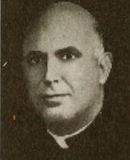
The Very Reverend Edward J. Sponga, S.J., 1963-1965
Like his predecessor, Edward J. Sponga was both a Philadelphia native and a graduate of Roman Catholic High School. He entered the Society of Jesus in 1935. As a Jesuit scholastic he taught at the St. Joseph’s Preparatory School in Philadelphia and was ordained to the priesthood in 1948. Fr. Sponga’s first assignment after completing his training as a Jesuit was to The University of Scranton where from 1950 to 1953 he was a faculty member in the Philosophy Department. After two years at Fordham University completing his doctoral degree, he returned to Scranton in 1955 as Dean of the Graduate School and chair of the Philosophy Department. In 1957, Fr. Sponga became the youngest man ever to serve as rector of the Jesuit theological center at Woodstock College in Maryland where he remained for six years until returning to The University of Scranton as its president.
While Fr. Sponga’s presidency was to be the shortest of all of the University’s presidents except for three acting presidents, it was not without its accomplishments. Most notably, in 1964 the University was the recipient of a quarter-million dollar electronic computer system designed to facilitate research projects within the local community, which would also lay the foundations for instructional programs in computer science that would expand dramatically over the following half-century. Only a year later, the Jesuit Fr. General in Rome announced the appointment of Fr. Sponga as the Provincial of the Maryland Province, which, at the time, involved the supervision of more than 1,100 other Jesuits.
In the summer of 1968, Fr. Sponga attracted national headlines when he announced that he was leaving the Society of Jesus. He lived the rest of his life as a layman working in counseling before his death in the year 2000.
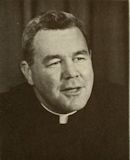
The Very Reverend Aloysius C. Galvin, S.J., 1965-1970
Known to his family, friends and colleagues as “Wish,” Aloysius Carroll Gavin was a native of Baltimore where, after graduating from Loyola High School in 1942, he began his undergraduate studies at Loyola College. After just one year he enlisted in the U.S. Navy’s College Training Program and, in 1944, was commissioned as an ensign before going on to serve as an executive officer on board a submarine chaser during the closing months of World War II. When the war ended he resumed his college studies at Loyola where he also won considerable recognition as a standout basketball player. After receiving his bachelor’s degree in 1948, he entered the Society of Jesus and was ordained to the priesthood in 1957. After completing his training as a Jesuit, Fr. Galvin’s first assignment was as a teacher at St. Joseph’s Preparatory School in Philadelphia for one year before he returned to his alma mater in Baltimore serving as Loyola College’s academic dean for six years. In 1965, while just 40 years old, he became the youngest Jesuit ever to assume the presidency of The University of Scranton.
Fr. Galvin’s tenure as President coincided with a period when antiwar protests erupted on campuses across the country and Scranton was no exception. In addition to the war in Vietnam, student and faculty activists targeted local issues including student dress codes, female visitation in dorms and University governance. While personally troubled by such unrest, Fr. Galvin approved several measures addressing these grievances, including abolition of the student dress code and establishing a faculty representative assembly. After the Long Center opened in 1967, 17 years would pass before the University would construct any new buildings; however, two years later the University would acquire a large structure on the corner of Jefferson Avenue that had been the headquarters of the Glen Alden Coal Company, which, after being renamed O’Hara Hall, was used initially to house the Department of Business Administration and Economics. He also oversaw the transition of the University’s governance to an independent Board of Trustees separate from the Jesuit community. Thus, when he announced, in January 1970, his decision to resign as president at the end of the following June, the new Board, chaired by a layman, established a search committee to recommend candidates for a new president to be appointed by the Board. Fr. Galvin, as the last Jesuit to serve as both President and Rector of the Jesuit community, was the last entitled to be addressed as “Very Reverend.”
After leaving Scranton, Fr. Galvin became a faculty member at Georgetown Preparatory School only to suffer a massive heart attack within days of his arrival. After a lengthy recovery he remained at Georgetown Prep for over 35 years where he served as a beloved teacher and mentor to a generation of students before his death in 2007. In 1977, The University of Scranton dedicated an outdoor athletic complex in his honor as the Galvin Terrace. When the Weinberg Memorial Library was constructed on its site in 1992, the Galvin Terrace was relocated to a plaza outside the new library.
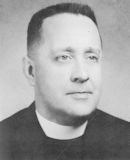
Reverend Joseph A. Rock, S.J. H'81 (acting), 1970
Although the University Board of Trustees announced the selection of the Rev. Dexter L. Hanley, S.J., as Fr. Galvin’s successor in June 1970, Fr. Hanley’s prior commitments made it impossible to take up his position until the beginning of September. Thus the Board designated the Reverend Joseph A. Rock, S.J., to serve as Acting President for the two months between Fr. Galvin’s departure and Fr. Hanley’s arrival. While Fr. Rock’s brief acting presidency was uneventful, he was one of the University’s most influential administrators for nearly twenty years.
Joseph A. Rock, a Philadelphia native, entered the Society of Jesus in 1932, after graduating from St. Joseph’s Preparatory School. In the course of his training as a Jesuit he earned his bachelor’s and master’s degrees in history from Georgetown University before being ordained a priest in 1945. He first came to Scranton in 1946 as an instructor in history for one year before returning to Georgetown where, after completing his Ph.D., he served as Director of Student Personnel from 1950 to 1957. He then returned to Scranton serving first as dean of the Evening College (1957-1961), then as dean of the Graduate School (1961-1966), and finally as Academic Vice-President for the next nine years. In addition to his role in administration, he also served as a resident counselor in one of the freshman dormitories. After stepping down as AVP in 1975 Fr. Rock returned to the classroom as a professor of history for several years before his death in 1982.
In 1981, the University conferred on Fr. Rock an honorary doctorate. In 1983, a former Assembly of God Church obtained by the University was named Rock Hall in his memory. While its lower floor houses the Military Science Department, the upper portion is the University’s Madonna della Stradda Chapel.
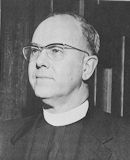
Reverend Dexter L. Hanley, S.J. H'75, 1970-1975
Born in Fort Worth, Texas, Dexter L. Hanley, as the son of a pioneer in military aviation who would retire as a Major General, spent most of his childhood on military bases in the United States and abroad. After graduating from Georgetown University in 1940, he entered the Society of Jesus and was ordained to the priesthood in 1951. Following the completion of his training as a Jesuit, The Reverend Dexter L. Hanley entered Harvard Law School where he earned both his LL.B and LL.M. degrees. From 1959 to 1970, he was a faculty member at the Georgetown University Law Center, specializing in labor law and directing its Institute on Law, Human Rights and Social Values. In 1969, as The University of Scranton began its transition to an independent board of trustees, Fr. Hanley was appointed as the first member not to be part of the Scranton Jesuit community, and one year later was chosen by the board to succeed Fr. Galvin as president.
Fr. Hanley’s first challenge as president was a proposal put forth with broad support within the University community for a move to coeducation in all of its colleges to address declining enrollments. In an effort to avoid confrontation with Marywood College, then still an all-women’s school, he deferred action on the proposal for two years during which both institutions pursued an experimental cooperative program before the University became fully coeducational in 1972. Fr. Hanley also gave quick approval to a major revision of the undergraduate curriculum offering students much more flexibility while maintaining a common core rooted in the values of Jesuit education. A growth in enrollment then began which would continue over the next three decades.
While Fr. Hanley and his faithful companion “Prince,” a pure bred German shepherd, became familiar faces on campus, his relations with the faculty became strained over issues related to rank and tenure policies and compensation. In November 1974, when Fr. Hanley was suddenly taken ill at a civic luncheon with what was diagnosed as a brain tumor, the faculty had already taken steps to form a faculty union under NLRB jurisdiction. Two months later, his illness forced Fr. Hanley to submit to the trustees his resignation as the University’s 19th President.
Following his resignation Fr. Hanley remained in residence in Scranton where, despite his infirmity, he frequently appeared at University functions including when he received an honorary doctorate in 1975 and a year later when the Evening College was renamed the Dexter Hanley College in his honor. The manner in which he bore his misfortune became a source of inspiration to many before his death in 1977. When the Hanley College was later merged with the Graduate School, Fr. Hanley’s memory was preserved on campus when one of the student townhouses in the Mulberry Plaza complex was named the Dexter L. Hanley House.
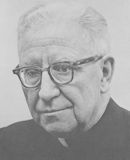
Reverend Edwin A. Quain, S.J. (acting), 1975
To serve as president while a search was conducted for a permanent replacement for Fr. Hanley, the Board of Trustees turned to a distinguished Jesuit scholar and administrator, the Reverend Edwin A Quain, who had six years earlier served as an interim president at Georgetown University for several months in 1969. Born in 1906, Edwin Alphonsus Quain was a New York City native who entered the Society of Jesus in 1924 and was ordained to the priesthood in 1936. After earning a doctorate in classical and medieval literature from Harvard University in 1941, he began an exceptional career at Fordham University that would extend over more than three decades, serving first as a professor of classics, then as director of the Fordham University Press where his 20 years of service were interrupted by appointments in academic administration as dean of the Graduate School and from 1952 to 1956 as Fordham’s academic vice president.
Although he had been retired from full-time work at Fordham since 1972, Fr. Quain accepted the invitation to serve as Acting President in Scranton where he succeeded in easing the strained relations between the faculty and administration. He became much admired for his amiable and outgoing manner. Sadly, by the time his acting presidency came to an end in the summer of 1975 he had already been diagnosed with terminal cancer. His death came only six months after he returned to the Jesuit community at Fordham.
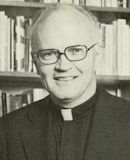
Reverend William J. Byron, S.J. H'84, 1975-1982
Born in Pittsburgh, William James Byron was raised in Philadelphia where, after graduating from the St. Joseph’s Preparatory School in 1945, he enlisted in the U.S. Army serving for one year in the 508th Parachute Infantry Regiment. Following his discharge he pursued undergraduate studies at Saint Joseph’s College (now University) before entering the Society of Jesus in 1950. It was as a Jesuit scholastic that Fr. Byron first came to Scranton teaching mathematics at the Scranton Preparatory School from 1956 to 1958 before his ordination in 1961. His initial positions after completion of his Jesuit formation included an assistant editorship at America magazine, a fellowship at the University of Maryland where he completed his Ph.D. in economics, teaching positions at Loyola University of Maryland, and Woodstock College where he served as Rector of the Jesuit community after it’s relocation to New York City. At the time he was chosen to be The University of Scranton’s 21st President in 1975 Fr. Byron had been serving as dean of the College of Arts and Sciences at Loyola University of New Orleans since 1973.
Under Fr. Byron’s leadership the University’s operating budget doubled, while at the same time a computer-based Management Information System ensured each year’s budget produced a surplus. For the first time since Fr. Long’s presidency, Fr. Byron embarked upon a multi-million dollar capital campaign. A new undergraduate college, the School of Management, was created, along with new programs including nursing and physical therapy. While no new buildings were constructed, the University’s physical plant continued to grow with the purchase of several existing structures, including the former YWCA on the corner of Linden Street and Jefferson Avenue, and most notably by getting the city of Scranton to agree to the closing of the 900 and 1000 blocks of Linden Street allowing for the creation of a University Commons that would become the center of the campus.
After his presidency in Scranton, Fr. Byron became the first Jesuit to serve as president of the Catholic University of America, a post he held for 10 years from 1982 to 1992. He went on to hold professorships at Loyola University of Maryland and Georgetown University. He has also served as rector of the Jesuit community at Georgetown and as pastor of Holy Trinity Church in Washington. He has twice been called upon to serve as an acting president, at Loyola University of New Orleans (2003-2004) and at his high school alma mater St. Joseph’s Preparatory School (2006-2008). In 1982, The University of Scranton conferred an honorary doctorate on Fr. Byron, one of 25 honorary degrees he has received, and in 1986 the William J. Byron, S.J., Recreational Complex was dedicated in his honor. The author of no fewer than 11 books and a syndicated columnist for the Catholic News Service, Fr. Byron is the recipient of the Theodore M. Hesburgh Award from the Association of Catholic Colleges and Universities and the Commodore John Barry Award from the American Catholic Historical Society. He currently is University Professor of Business and Society at Saint Joseph’s University.
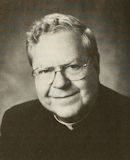
Reverend J. Allan Panuska, S.J. H'74, 1982-1998
A native of Baltimore, Maryland, Joseph Allan Panuska entered the Society of Jesus in 1948 after graduating from Loyola College (now University) of Maryland with a bachelor’s degree in biology. During the course of his training as a Jesuit, in addition to licentiates in philosophy and theology, The Reverend J. Allan Panuska earned his doctorate in biology from St. Louis University and was ordained to the priesthood in 1960. A specialist in low temperature biology, he held research fellowships at the Emory University School of Medicine in Atlanta and Cambridge University in Great Britain. From 1963 to 1973, he taught biology at Georgetown where he also served as rector of the Jesuit community. In 1973, he was appointed as Provincial of the Maryland Province, a post he held for six years during which time in 1974 he received an honorary doctorate from The University of Scranton. From 1979 until his being chosen as the University’s 22nd President in 1982, Fr. Panuska served as Boston College’s academic vice president and dean of Faculties.
Fr. Panuska’s 16-year tenure as President at Scranton is by far the longest of any other president before or after him. The dedication of the Redington Hall student residence in 1984 marked the first new construction on campus in 17 years. By 1998, no fewer than 14 other new buildings would follow, along with major renovations to existing structures at a cost of over 110 million dollars paid for with the help of two large and highly successful capital campaigns. The expansion of the physical plant was accompanied by an equally significant growth in the University’s academic quality, including large increases in the number of faculty and the creation of another new undergraduate school, the College of Professional Studies, which, after Fr. Panuska stepped down as President, was named the Panuska College in his honor. Referred to affectionately by faculty as “Big Al” and by students as “Papa Bear,” he became a truly beloved figure on campus as well as in the local community. In recognition of his exceptional service to the University, the Board of Trustees conferred upon him the title of President Emeritus, the first former President to be so honored.
After leaving Scranton, Fr. Panuska served as rector of the Jesuit community at the Jesuit Center in Wernersville before returning to the University where for several years he assisted in the work of campus ministry before taking up residence at health centers for older Jesuits, first at the St. Claude la Colombiere community in Baltimore and then in Manresa Hall in Merion. He died on February 28, 2017.
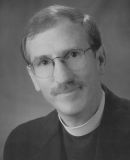
Reverend Joseph M. McShane, S.J. H'04, 1998-2003
A native of New York City, Joseph Michael McShane entered the Society of Jesus in 1967 after graduating from Regis High School. In the course of his formation as a Jesuit he received both bachelor’s and master’s degrees from Boston College as well as both his M.Div. and S.T.M. degrees from the Jesuit School of Theology in Berkeley, California. After his ordination to the priesthood in 1977, Fr. McShane earned his doctorate in the history of Christianity at the University of Chicago where he studied under the eminent church historian, Martin Marty. From 1982 to 1992, he served as a professor of religious studies at Le Moyne College where he also served as department chair before moving to Fordham University as dean of Fordham College, its largest college at Rose Hill in the Bronx, a post he held for six years before being selected to succeed Fr. Panuska as the 23rd President of The University of Scranton, on whose Board of Trustees he had previously served.
The boundless energy and enthusiasm Fr. McShane brought to Scranton would prove infectious to both the campus and local communities. There was virtually no place on campus where he was not likely to appear unannounced to offer encouragement to students and staff alike. With a remarkable memory for names and an ability to articulate eloquently the University’s mission as a Jesuit university, he had considerable success in cultivating benefactors, and in 2002 he organized a President’s Business Council whose annual dinners in New York City would generate millions of dollars in gifts. The construction of new facilities begun under Fr. Panuska continued with little, if any, interruption, including student townhouses and a large handsome structure, Brennan Hall, to house the Kania School of Management. Given his close ties to New York and Fordham, few were surprised when, after Fordham’s long-time president, Fr. Joseph A. O’Hare, S.J., announced his retirement, Fr. McShane was chosen by Fordham’s trustees as Fr. O’Hare’s successor in 2003. The University of Scranton would honor Fr. McShane’s service by dedicating the top floor of Brennan Hall as the Rev. Joseph M. McShane, S.J., Executive Center and by the conferral of an honorary doctorate in 2004.
As Fordham’s 32nd President, Fr. McShane has moved aggressively to enhance its reputation and academic excellence. In announcing the start of a 10-year strategic plan in 2006, leading up to the celebration of the 175th anniversary of Fordham’s founding in 2016, Fr. McShane outlined his vision of how, capitalizing on its location in New York City and its Jesuit identity, Fordham University could become the nation’s preeminent Catholic university. In 2009, Fr. McShane succeeded in winning approval from the New York City Council for an extensive renovation and expansion of Fordham’s Lincoln Center campus in mid-town Manhattan that would add several new facilities, including a new building for its School of Law. In addition to his role at Fordham, Fr. McShane has served on numerous boards including the Commission of Independent Colleges and Universities and the Commission on Metropolitan Transportation Authority Financing. One honor that gave him particular pleasure came in 2009 when he was invited by his beloved New York Yankees to throw out the ceremonial first pitch at a game at Yankee Stadium as part of the celebration of the 150th anniversary of Fordham’s participation in the first intercollegiate baseball game ever played with nine men teams.
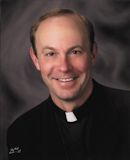
Reverend Scott R. Pilarz, S.J. H'15, 2003-2011
Raised in South Voorhees Township, New Jersey, a suburb of Camden and Philadelphia, Scott Ronald Pilarz, after graduating from Camden Catholic High School, received his baccalaureate degree in English from Georgetown University in 1981, before entering the Society of Jesus later that year. During the course of his training as a Jesuit he would obtain three master’s degrees, one from Fordham University in philosophy and two from the Weston School of Theology in theology and divinity, before his ordination to the priesthood in 1992. He would go on to complete his Ph.D. in English at the City University of New York.
After two years as a faculty member at St. Joseph’s University, Fr. Pilarz returned to his alma mater, Georgetown, in 1996, where for the following seven years he would serve as a professor of English and eventually as University Chaplain. In addition to winning awards for his excellence in the classroom, he was instrumental in reviving the tradition of having a live mascot at Georgetown, a bulldog named “John P. Carroll” or more familiarly simply as “Jack” whom Fr. Pilarz took under his care. When Fr. Pilarz was chosen as The University of Scranton’s 24th President in 2003, “Jack” was retired as Georgetown’s mascot so that he could accompany Fr. Pilarz to Scranton where they would share quarters in a counselor’s suite in one of the student residences throughout his presidency.
Under Fr. Pilarz’s direction, the expansion of the University’s physical plant that began under his last two predecessors continued at an even faster pace, including the construction of several large structures that would dramatically change the face of the campus. In 2008 the $35 million-dollar DeNaples Campus Center replaced the original student center built nearly a half-century earlier whose demolition made room for a large green space in the center of campus.
Construction of the $95 million-dollar Loyola Science Center, the single largest building ever built by the University, was nearly completed at the end of Fr. Pilarz’s presidency, as well as two large student residences on Mulberry Street directly across from the DeNaples Center, one of which was named Pilarz Hall when it was dedicated in 2012. All of this was made possible through the largest capital campaign in the University’s history, Pride, Passion, Promise-Shaping Our Jesuit Tradition, whose initial goal of $125 million-dollars would be surpassed by over $10 million-dollars in additional gifts.
No matter how crowded his schedule as an administrator, Fr. Pilarz always found time to remain in the classroom. Every semester he would offer at least one course in 16th century British literature or Renaissance poetry, allowing him to interact directly with students as an instructor and counselor. His students were often awed by the breadth of Fr. Pilarz’s interests ranging from the poetry of the Jesuit Robert Southwell to the music of Bruce Springsteen.
In August 2010, Marquette University in Milwaukee, WI announced that Fr. Pilarz, who had been serving as a member of their Board of Trustees, had been selected to succeed their retiring president as of July 2011. Fr. Pilarz would serve as president at Marquette until December 2013, shortly after which he accepted an appointment as president of Georgetown Preparatory School in Bethesda, Maryland. In March 2017, Fr. Pilarz was named President-Elect of The University of Scranton to which he returned as its 27th President in 2018 after completing his service at Georgetown Prep.
Throughout his career, Fr. Pilarz has been deeply dedicated to the ideals of Catholic and Jesuit education, a passion much in evidence in the stirring address he gave at The University of Scranton’s commencement exercises in May 2015 at which he was also awarded an honorary doctorate in humane letters.
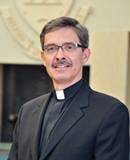
Reverend Kevin P. Quinn, S.J., J.D., Ph.D., 2011-2017
A native of Queens, New York, Kevin Patrick Quinn entered the Society of Jesus in 1973. After entering the Society he went on to earn his baccalaureate degree at Fordham University, summa cum laude and Phi Beta Kappa, and both
Following his ordination to the priesthood in 1985, Fr. Quinn entered the Law School at the University of California, Berkeley where he earned both a J.D. as well as a Ph.D. in jurisprudence and social
From 1994 until 2006, Fr. Quinn served as a Professor of Law at the Georgetown University Law Center where he specialized in
Fr. Quinn’s passionate advocacy for Jesuit education was evident in one of his first moves as President, the creation of an on-campus Jesuit Center to help faculty and staff gain a deeper understanding of the University’s Catholic and Jesuit identity. Likewise, he oversaw the development of a five-year Strategic Plan rooted in Ignatian values and designed to foster a transformative student experience based on engagement,
Under Fr. Quinn’s tenure, the University continued to win national recognition for the value and quality of the education it provides to students, with record numbers of applicants and the enrollment of some of the largest classes in its history. Academic programs expanded to include new five-year bachelor’s and master’s programs and the University’s second doctoral program in nursing practice.
Despite budgetary constraints, expansion and improvements to the campus continued throughout Fr. Quinn’s tenure, including the acquisition and renovation of Louis Stanley Brown Hall, the completion of the Loyola Science Center, the construction of the 116,360-square-foot, eight-story Leahy Hall, the renovation of the historic Madison School into an early childhood learning center and graduate housing – through a unique collaboration with outside partners, and finally the groundbreaking for a 14 million dollar, 11-acre athletic complex in South Scranton, which the University trustees announced in May 2017 would be named the Kevin P. Quinn, S.J., Athletics Campus in recognition of his service as President.
In addition to his many other accomplishments, Fr. Quinn also spearheaded social justice initiatives, including his championship of efforts to encourage a living wage in Northeastern Pennsylvania, his support for refugees internationally and regionally, and his strong advocacy for expanded community-based learning and living-learning communities.
After stepping down as President, Fr. Quinn began a sabbatical leave to pursue research and travel, during which he remains officially a member of the Scranton Jesuit community.
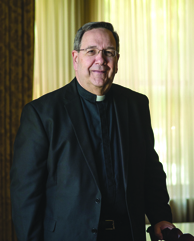
Reverend Herbert B. Keller, S.J., H’06 (interim), 2017-2018
Rev. Herbert B. Keller, S.J. H’06, served as interim president at The University of Scranton from June 1, 2017, to June 30, 2018. During his tenure, the University community celebrated the opening and dedication of the Rev. Kevin P. Quinn, S.J., Athletics Campus, where the fieldhouse is named in his honor. Fr. Keller's year was marked by his deep engagement with the University's students who dedicated the 2018 yearbook to him.
Fr. Keller serves as special assistant to the president. In this role, he will be available to departments and divisions to work with students on matters involving the Jesuit identity of the University. He will also continue his ministry of presence on campus, providing pastoral care and support to students at activities, events and programs.
Fr. Keller has served as the rector of the Scranton Jesuit Community since September 2015. Prior to that, he served for 18 years as president of Scranton Preparatory School and is the longest-serving president in the Jesuit school’s history.
Fr. Keller entered the Jesuit novitiate in Wernersville in 1969. In 1975, he received a bachelor’s degree in English and philosophy from Fordham University. He earned a master’s degree with distinction from Weston School of Theology in Boston and a professional diploma in secondary school administration from Fordham University’s Graduate School of Education. He was ordained a priest in 1981 and has served in Jesuit secondary education for more than 35 years.
Fr. Keller was named principal of Scranton Prep in 1983 and served in that capacity for eight years. From 1991 to 1997, he served as principal at his alma mater, Saint Joseph’s Prep in Philadelphia. During his tenure there, Fr. Keller was appointed as rector of the Jesuit community at Saint Joseph’s Prep. In 1997, he was named
In 2016, Fr. Keller served as a delegate from the Maryland Province for the Society of Jesus' General Congregation 36.
Fr. Keller is a past trustee of Fairfield University, Saint Joseph’s University, Saint Joseph’s Preparatory School and Gonzaga College High School. He is a member of Scranton’s Board of Trustees, having served on the Board through various terms for 17 years. His Board tenure is second only to the late Rev. J.A. Panuska, S.J., president emeritus at Scranton.
In 2006, Fr. Keller received an honorary doctoral degree from The University of Scranton.
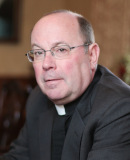
Reverend Scott R. Pilarz, S.J. H'15, 2018-2021
Rev. Scott R. Pilarz, S.J. H'15, served as Scranton’s President for two terms -- first as the 24th President from 2003-2011, then as the 27th President from 2018-2021. He was the second-longest-serving President in Scranton’s history.
Just a few weeks before his second inauguration, Father Pilarz announced his diagnosis of amyotrophic lateral sclerosis (ALS). In his announcement, he committed himself to continued service and to raising awareness about the disease.
Soon after returning to Scranton in 2018, he formed the Task Force on Healing, Reconciliation and Hope as part of the University’s response to the sexual abuse crisis facing the Catholic Church.
In 2019, Father Pilarz established the Gail and Francis Slattery Center for Ignatian Humanities. He also supported the humanities generally at the University, to further advance the liberal arts tradition that is at the core of Jesuit education.
In response to the national call to action against systemic racism, he gathered resources to promote equity, diversity and inclusion at the University, through updated policies and hiring practices, additions to the curriculum, educational workshops and resources for students, faculty and staff.
Under his leadership, the University developed and adopted the 2020-2025 Strategic Plan, which includes goals focused on diversity and inclusion, and the humanities. He also led fundraising efforts to strengthen scholarship endowments to keep Scranton accessible to students and families, and strongly supported efforts to ensure the continued vitality of Scranton’s Catholic and Jesuit mission and identity.
In 2020 and 2021, Father Pilarz calmly and competently guided the University’s response to the COVID-19 pandemic, focusing steadfastly on the school’s sacred mission to provide students with a transformational Catholic and Jesuit education. Throughout the pandemic, even as his disease progressed, he shared his love and support for the University community through pastoral messages of courage, hope and humor.
Father Pilarz passed away during his presidency on March 10, 2021, at the age of 61.
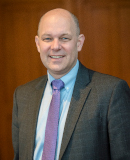
Jeff Gingerich, Ph.D. (acting), 2021
Jeff Gingerich, Ph.D., served as Acting President for three months in 2021. He was named to the position following the death of the Rev. Scott R Pilarz, S.J., in March 2021. Dr. Gingerich shepherded the University through the transition after Father Pilarz's passing and served as a steward of the office until the next president selected by the Board of Trustees, the Rev. Joseph G. Marina, S.J., began his tenure in June 2021.
Dr. Gingerich then returned to his full-time position as provost and senior vice president for academic affairs.
Dr. Gingerich joined the University June 2018. Previously, he served as provost and vice president for academic affairs at Cabrini University, a Catholic liberal arts institution in Radnor. In his that role, he served as the chief academic officer overseeing four schools offering more than 35 undergraduate, graduate and doctoral programs.
Much of Dr. Gingerich's life’s work prior to entering higher education was shaped by six years as a voluntary service worker in New Orleans, Louisiana, coordinating conflict resolution programming at the Twomey Center for Peace through Justice at Loyola University. These experiences inspired his research and teaching interests in race and ethnic relations, cultural analysis, prisoner reentry, and incarceration reform. During that time, he also taught courses in cultural awareness and conflict resolution for officers and trainees of the New Orleans Police Department. While pursuing his master’s and doctoral degrees, he was a facilitator in the Restorative Justice Program at Graterford State Prison, Philadelphia.